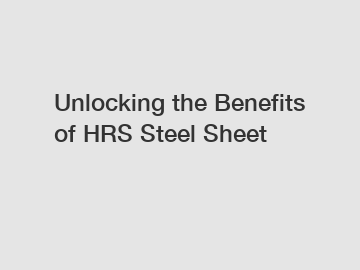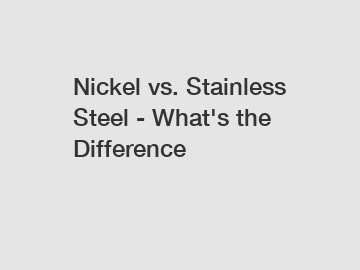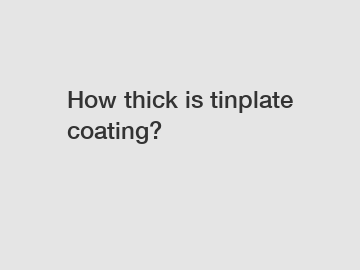The name AR400 steel indicates to most people the steel they are buying is 400 BHN (Brinell) hardness. Because there are no industry guidelines or standards for wear plate, it can be any hardness at all. We have seen foreign-made steel wear plate sold as AR400; test at 302 BHN hardness! Did the customer get what they paid for? No way.
Hunter Special Steel Co., Ltd Product Page
Are you getting maximum life from your wear plate investment? Or have you accepted that all wear-resistant steels are the same?
Besides questionable hardness, you have likely experienced these additional issues using commodity AR400:
1. Like an Oreo cookie, most AR steel is softer in the center: It is very easy and inexpensive to make the wear plate hard, but only on the surface. Without adequate alloy content, it is impossible to have a through-hardened wear plate.
The center of thicker steel plates is similar in hardness to mild steel. Since all steel is hard to the touch, most people think steel is the same hardness all the way through. That is not the case. Inexpensive wear plate is just surface hard, as you see in this photo. Once the hard surface wears through, the softer middle of the plate wears away quickly.
2. Difficult to form: The greater the carbon content of the steel, the less it will bend to shape. AR400 is difficult to form and attempting to form commodity AR500 or higher is impractical. It will often crack if you try to bend it at all.
3. Difficult to weld: Higher alloy and greater Carbon content require precise preheat and welding procedures. Most AR400 manufacturers specify generic welding rods, confirming their plate has little alloy content.
4. Poor impact resistance: Nearly all wear is a combination of abrasion and impact. One steel-making rule of thumb is: 'The higher the hardness, the higher your Carbon content, or the colder the temperature; the lower the impact resistance of your steel'.
5. Expensive labor costs to remove the old steel and install new steel. You seldom have enough time or labor to change out what absolutely must be done. When your wear plate fails before your next scheduled replacement, you are not only forced to buy replacement steel, you have to remove the failed plate and re-install replacement plate again. Any slight savings you had buying inexpensive plate, just became your most expensive decision.
Has your vendor ever told you the steel you buy is not the same hardness all the way through the thickness of the wear plate? Betting odds say they never brought it up.
Now You Can Finally Control Your Own Scheduled Replacements
Because JADCO QT-PLUS® has the same hardness completely through the thickness of the steel, your wear resistance is not only consistent ' it is also very predictable.
Here is why consistent and predictable is critically important:
Let's say you installed a ½' QT-PLUS® three years ago. Testing shows it has now worn to 3/8' thick. This means the wear removed 1/8' of material in 3 years. Now you can plan to replace it at a time you choose in another 3 years when it will likely have ¼' remaining. Capital budget planning and labor scheduling, are now finally under your complete control. Rather than losing sleep anticipating yet another unscheduled failure at the worst possible time, you select the time to replace the wear plate when it is convenient for your time and budget.
Your HUGE benefit is being able to walk away from a completed project without having to constantly worry if it will perform as needed. Now you can concentrate on the millions of other details demanding your time.
Extend the life cycle of your equipment
A perfect example is a major company in central Wisconsin. In they installed QT-PLUS® where they had always used AR 400. For this application, AR400 would barely make it 4 years. They wanted to double their plate life for this project, since labor costs have increased dramatically. Inspection of the QT-PLUS® in , allowed them to plan replacing this steel in . This maintains both their budget and schedules.
Your Hardness Is Guaranteed
We test steel hardness ON EVERY SINGLE PLATE of QT-PLUS®.
We track every plate thru each project. There are no hidden gimmicks, excuses, concerns, or questions on what material went into your project. You always know what you get when you buy QT-PLUS®.
Our competition cannot match the QT-PLUS® advantages you receive:
' QT-PLUS® is specifically designed to maintain 95% hardness at the midline of a 3' thick plate, when the competitors cannot say the same about 1' thick commodity AR type steel. This means the QT-PLUS® plate you use will be the same hardness throughout, guaranteed. Predictable wear means wear is under control.
' QT-PLUS® is readily formable using the right equipment: With a target hardness of 500 BHN, the precise ratio of critical elements allows us to cold form QT-PLUS®. But don't plan on your neighborhood fabricator bending it. We designed this material to combat abrasion and impact. It will resist your bending efforts too. Forming QT-PLUS® requires FOUR TIMES the force of mild steel. If your local fabricator can bend 1.5' thick mild steel, they can only bend 3/8' QT-PLUS®. With two 1,000 ton press brakes and two sets of rolls we have the proper tools to form QT-PLUS® for your specific needs. Call today to see how we can help.
' Welding QT-PLUS® is easy when you follow proper standard welding procedures. Preheat the steel prior to welding, and use the correct welding alloys for the material. QT-PLUS® has high levels of Nickel, Chromium, Molybdenum and Boron. We recommend using Fusion UltraBond welding wire created specifically for this steel.
' Avoid extra AR replacement costs and labor expense in standard replacement steel life cycles. Conserve your capital budget and profits. Extending your wear life in problem areas maximizes your results. A thorough project examination proves QT Plus ® to be your most cost effective material option available. Focus on your next biggest headache; how can we help there as well?
PROUDLY MADE IN THE U.S.A!!
QT-PLUS® is made to our precise specifications by Arcelor Mittal USA in Conshohocken, PA. We discovered no other steel mill can match the exacting quality we demand. This assures you receive the best product available, with every order.
' Every QT-PLUS® plate is tested at the mill to assure consistent results for your applications. This gives you dependable, predictable results every time. If it doesn't meet our specifications, it doesn't ship ' simple as that.
IN ONE REAL WORLD TEST AFTER ANOTHER, QT-PLUS® DELIVERS LONGER, MORE PREDICTABLE LIFE THAN OTHER ALLOY STEEL WEAR PLATES.
So what do YOU get by working with JADCO?
' Expert Analysis to uncover the true cause of your problems, rather than just treating the symptoms.
' Compress Your Time to Results. My experience in a variety of industries will quickly determine what materials, methods and techniques will deliver the quickest results to control your applications.
' This is all about improving your results, not about steel. Using the right tools for the job delivers the results you have been searching for, but never had time to track down all the options. I can recommend the proper materials for your applications, even if my product is not the solution.
' Guaranteed Peace of Mind Knowing Your Wear Resistant Steel Will Fit. When we measure your replacement parts, they fit. Period. There are zero excuses.
' Delivering Maximum Life for Your Worst Wear Problems. There is a reason why our customers who bought QT-PLUS® reorder additional plates for their other applications. It simply works better than any other steel they have used. A large aggregate producer had replaced loader bucket bottoms every other year. Their first QT-PLUS® replacement bucket bottom installed in is still going strong. Since they no longer needed to be replaced as usual, this left thousands of dollars available for additional equipment.
Are you continuing to patch your existing wear plate, while praying for better results?
Or will you finally get better results and longer life than you ever have before by using QT-PLUS®?
For over the last 40 years JADCO has focused exclusively on delivering consistent, longer equipment life for our customers.
Now you understand why we are able to deliver better results to our customers. We think differently by strictly focusing to improve your current results.
Let's Talk
Allow us to help you today by calling (724) 452-, or to:.
We will schedule a meeting with one of our local wear plate specialists at a time that best fits your schedule. Remember, the only thing you have to lose by not working with JADCO, are your profits. When your standard AR wear plate gives out, give JADCO a shout! (724) 452-.
AR400 vs. AR450 vs. AR500 ' Understanding Abrasion Resistant Steel
In construction and fabrication, the grade and composition of the steel plate materials used make a huge impact on the final product. Abrasion resistant steel plate is a common steel plate that boasts a harder, tougher quality that lasts about four times longer than ordinary high-strength structural steel plate.
Featured content:Is nickel cheaper than stainless steel?What is the best state to build a container home?The LSF construction system (Lightweight Steel Frame)Why is foldable container house Better?Duplex 2205 Stainless SteelInconel 601 (Alloy 601, UNS N06601) Tube/PipeIs copper piping cheap?
If you want to learn more, please visit our website ar400 steel composition.
But what makes it tougher, and how do you know when your project requires abrasion resistant steel?
We get this question a lot, so here is the run-down on abrasion resistant steel plate, as well as the differences between hardness levels AR400, AR450, AR500 and beyond. You can also contact us today to get a quote for abrasion resistant plate.
What is Abrasion Resistant Steel Plate?
Abrasion resistant (AR) steel plate is a high-carbon alloy steel plate. This means that AR is harder due to the addition of carbon, and formable and weather resistant due to added alloys.
Carbon added during the formation of the steel plate substantially increases toughness and hardness, but reduces strength. Therefore, AR plate is used in applications where abrasions and wear and tear are the main causes of failure, such as industrial manufacturing, mining, construction and material handling. AR plate is not ideal for structural construction uses like support beams in bridges or buildings.
Some common applications where AR steel is used to help resist material wear and tear include:
- Conveyors
- Buckets
- Dump liners
- Construction attachments, such as those used on bulldozers and excavators
- Grates
- Chutes
- Hoppers
How the Quenched & Tempered Process Creates AR Plate
AR material is produced by quenching and tempering forged steel blocks, or ingots. During this process, the grain structure is changed to increase toughness and encourage formability (or, to be less brittle), and results in through-hardening of the material.
Quenching and tempering (Q&T) is a two-part process:
Quenching occurs when steel brought to a high temperature ' usually between 1,500-1,650-degrees Fahrenheit ' is rapidly cooled with water. This process causes crystal structures to form within the steel, increasing hardness.
Tempering is the process of re-heating quenched steel to a below-critical temperature (around 300-700-degrees Fahrenheit), and then allowing the plate to cool in normal air temperatures.
Reheating the material breaks down the crystal structures formed during the quenching process, while the long cooling allows the crystal structures to refrom ' maintaining most of the strength and hardness, but adding to overall ductility.
Related: Exploring Steel Plate Heat Treatment Processes
What's With the F?
Many times, abrasion resistant steel is labeled "AR400F" and "AR450F" (and sometimes "AR500F"). Today, AR material with or without the "F" are interchangeable, but ' historically ' material with an "F" simply meant that it was "formable" and could be bent to a certain degree without cracking.
When mills produced both formable and non-formable steel plate, formable was slightly more expensive. However, diminished demand and more competitive pricing has resulted in the production of formable-only AR steel.
What is Through-Hardening?
AR steel is often described as being through-hardened, but what does that really mean?
When grain structure changes during the initial heating stage of Q&T, the composition of the entire plate changes. This is referred to as through-hardening. Through-hardening differs from "case-hardening," also referred to as "surface-hardening," which only hardens the surface while allowing the metal deeper underneath to remain soft. In this case, the composition, or hardening, of the plate only changes at the surface level.
AR400 versus AR450 versus AR500+
Before we dive into the difference between these common types of AR steel, it is important to clarify that AR steels are not governed by an ASTM code or a specific chemistry, but a level of hardness.
Different mills may have different 'recipes' for AR steel, but produced material is administered a hardness test ' known as the Brinell Test ' to determine the category in which it falls. Brinell tests performed on AR steel materials typically meet ASTM E10 specifications for testing material hardness.
The technical difference between AR400, AR450 and AR500 is the Brinell Hardness Number (BHN), which indicates the material's level of hardness. Materials with higher BHNs have greater levels of hardness, while materials with lower BHNs have lower levels of hardness:
AR400: 360-440 BHN Typically
AR450: 430-480 BHN Typically
AR500: 460-544 BHN Typically
AR600: 570-625 BHN Typically (less common, but available)
So, what does this mean in terms of usability? How do you know which level of hardness your project needs?
Hardness & Wear Resistance
Applications requiring material that can resist extreme levels of wear and stress ' such as mining equipment and concrete handling ' typically use plate grades with higher BHNs. Project engineers for these applications may choose AR500 or AR600 plate, as they are some of the hardest AR grades and, therefore, well-suited for wear resistance.
Some applications require more moderate levels of wear resistance, such as construction equipment. In these circumstances, project engineers may opt for AR plate grades with a lower BHN, such as AR400 and AR450. These grades are durable enough to handle high wear and stress without sacrificing other desirable material qualities, such as ductility.
Formability & Machinability
Projects that require AR materials are typically those that need a specific balance between hardness and brittleness. As you increase hardness, you also increase brittleness, making the material difficult to form, shape and weld. For some projects, hardness is critical, so brittleness is sacrificed. But in other cases, the material must be formed and machined, so the level of hardness must be reduced.
As a general rule, AR400 and AR450 are the 'sweet spots' in terms of good hardness combined with good formability. AR400 and AR450 are also relatively machinable, allowing for some ability to weld the material.
For projects that truly beat up the material, AR500 and AR600 will last longer and need to be replaced less frequently, but are more difficult to form. These grades also tend to be less machinable and more challenging to weld than AR grades with lower BHNs.
Material Cost
In general, abrasion resistant steel plate grades cost more than HSLA or mild carbon grades. However, AR steel is more durable and resistant to wear than these types of steel, meaning the material would need to be replaced less often. This could result in material cost savings in the long run.
The grade of AR steel can also impact material cost. Grades with higher BHNs (i.e. AR500, AR600) typically cost more than grades with lower BHNs (i.e. AR Medium, AR40), but other factors ' such as order size and market conditions '' influence price as well.
Read more about the factors that impact steel plate prices.
AR Medium Steel
While AR400+ grades are the most commonly used types of abrasion resistant steel, AR Medium steel is also used for applications requiring a harder, tougher material.
AR Medium steel plate grades ' which include AR200 and AR235 ' have a surface hardness of 180-260 BHN. This hardness level makes AR Medium grades suitable for moderate-wear applications that require more wear resistance than standard mild carbon steel grades, but not to the extent of wear resistance needed in applications like mining equipment.
Sourcing Abrasion Resistant Steel Plate
There are many factors that come into play when selecting which abrasion resistant steel plate grade is right for your project, including hardness, wear resistance and ductility. Ultimately, you and your team will be the best judge of which material your project needs. Cost, of course, comes into play, as sometimes it's worth having a formable material that needs to be replaced more often.
Once your team determines the correct material needed for a project, Leeco® Steel's expert team can help you source what you need when you need it. Our company specializes exclusively in selling larger quantities of steel plate, so contact us, request a quote or learn more today.
Current Leeco Steel customers can also buy AR500 steel plate online via our ecommerce website, Leeco Pro. Leeco Pro streamlines the order process and allows buyers to order the grades they need anytime, anywhere. Learn more and buy abrasion resistant steel plate online.
If you are looking for more details, kindly visit abrasion-resistant steel.









Comments
Please Join Us to post.
0